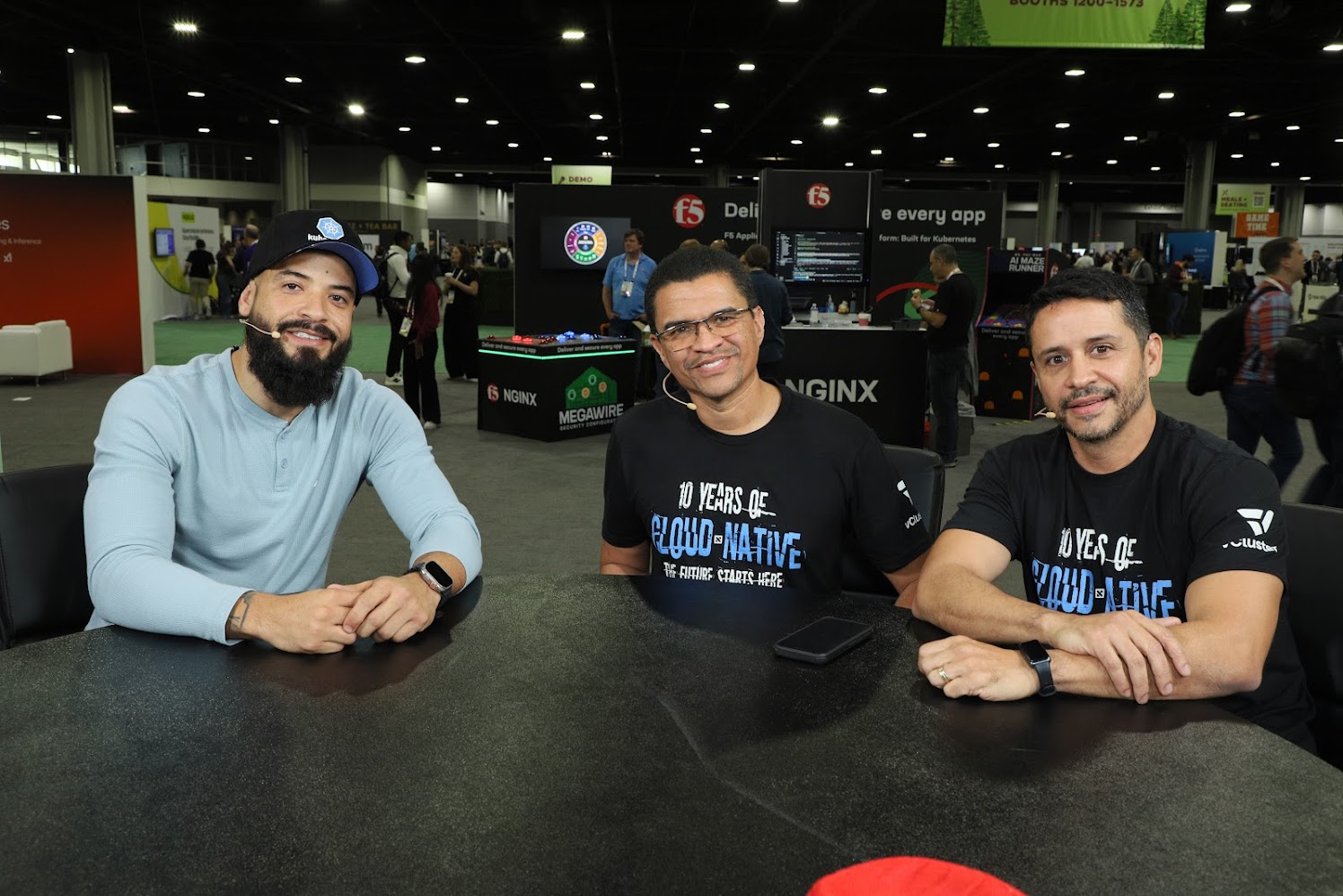 CLOUD
CLOUD
 CLOUD
CLOUD
 CLOUD
CLOUD
As Latin America’s largest bank, Banco do Brasil was looking to reduce overhead while expanding its hybrid cloud strategy.
It turned to Red Hat Inc.’s OpenShift to triple the number of managed applications. The platform also helped the bank meet regulatory compliance without increasing staff, according to Gustavo Fiuza (pictured, center), DevOps engineer at Banco do Brasil.

Banco do Brasil’s Gustavo Fiuza speaks with theCUBE about hybrid cloud.
“We needed to scale to the cloud providers, using on-premises and public cloud,” Fiuza said “Our need to deliver more applications in a reduced time was challenging, and we started to analyze different options in the market. OpenShift reduced the time and the effort that we needed to implement all of these regulatory [requirements] in our environment.”
Fiuza spoke with theCUBE’s Rob Strechay at the KubeCon + CloudNativeCon NA event, during an exclusive broadcast on theCUBE, SiliconANGLE Media’s livestreaming studio. He was joined by Welton Danyel Felipe (right), system analyst at Banco do Brasil, and Rodrigo Ramalho (left), principal solutions architect at Red Hat, who provided translation during the interview. They discussed how the bank has leveraged OpenShift to modernize its application development process. (* Disclosure below.)
Red Hat’s release of OpenShift 4.20 this week added new AI features, stronger security and expanded virtualization options for hybrid cloud environments. This will support Banco do Brasil’s ongoing work to embrace GitOps, applying DevOps practices to infrastructure automation and offering optimization services to its developers.
“Working on that platform, we can deliver more applications in a short time,” Felipe explained. “We have all these delivery processes, standardizing, GitOps, et cetera. We could use all that to deliver more applications and more value to the customer in the end.”
The bank was founded over 200 years ago and it, like many longstanding global financial institutions, has had to modernize its processes in a changing world. Cultural change can be difficult, according to Fiuza, but it is important work as the firm evolves its hybrid cloud model.
“The main benefit or the main challenge is the cultural change inside,” he said. “We need to adapt and grow into this new era of cloud-native and AI … transform the company of 200 years before into the company of the next 200 years as well.”
Here’s the complete video interview, part of SiliconANGLE’s and theCUBE’s coverage of the KubeCon + CloudNativeCon NA event:
(* Disclosure: Red Hat sponsored this segment of theCUBE. Neither Red Hat nor other sponsors have editorial control over content on theCUBE or SiliconANGLE.)
Support our mission to keep content open and free by engaging with theCUBE community. Join theCUBE’s Alumni Trust Network, where technology leaders connect, share intelligence and create opportunities.
Founded by tech visionaries John Furrier and Dave Vellante, SiliconANGLE Media has built a dynamic ecosystem of industry-leading digital media brands that reach 15+ million elite tech professionals. Our new proprietary theCUBE AI Video Cloud is breaking ground in audience interaction, leveraging theCUBEai.com neural network to help technology companies make data-driven decisions and stay at the forefront of industry conversations.